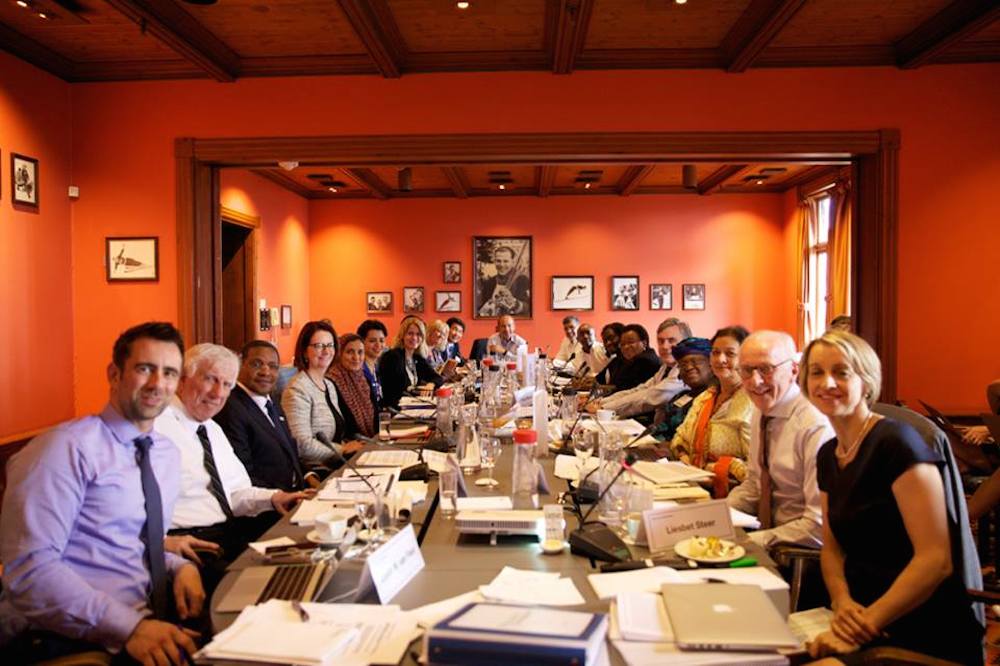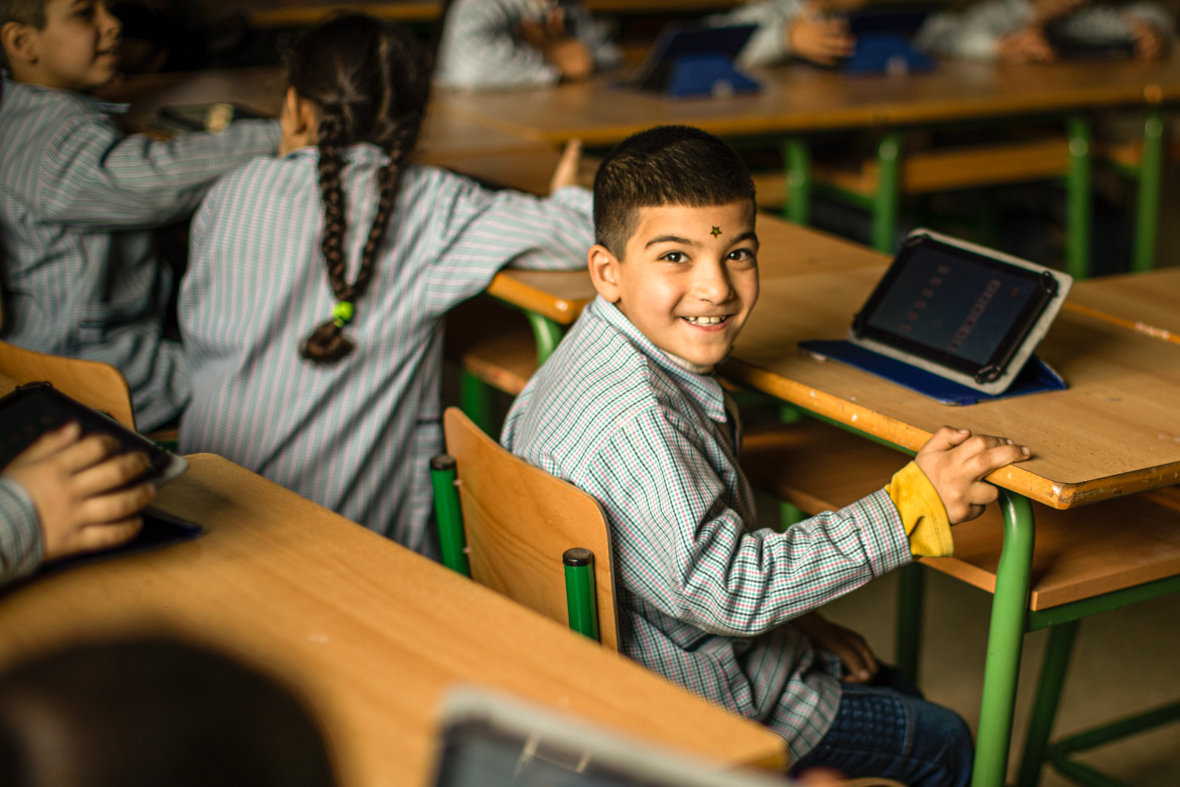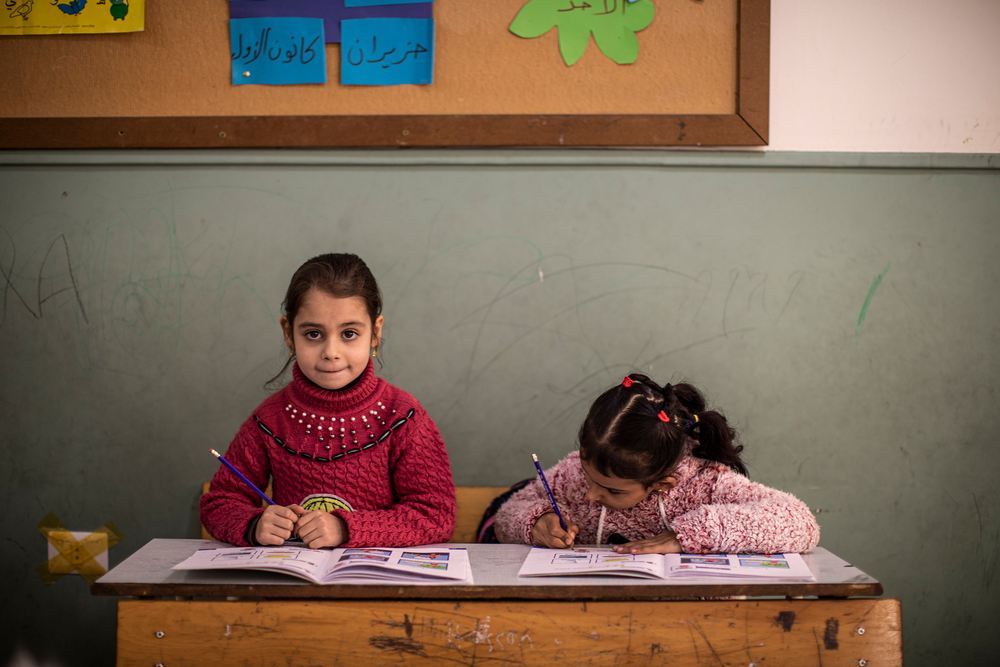
How we can get every child in the world into school with new funding approach
Barriers to education, Education funding, Education in emergencies, Right to education, Sustainable Development Goals
A group of major charities and organisations have asked the G20 to help launch a new mechanism to provide extra funding for global education - so why is it needed and how would it work?
Around the world, there are 150 million children under 14 who do not go to school. They are not getting an education because of wars, disasters, discrimination and abuse.
They are made to work, forced to marry while young, exploited or just do not have access to a classroom.
That’s shocking enough. But this grim picture is only going to get worse – by the year 2030 half of the world’s young people will be out of school or will lack the basic skills needed to get a job.
If we’re going to prevent that, we need a historic moment for education. A momentous decision like the ones made in the 1990s and 2000s that changed the lives of millions of children by reducing the debt of poor countries and tackling crippling diseases.
Fixing the world’s education crisis isn’t going to be easy.
“It cannot be mended by a little bit of money here and there,” said Gordon Brown, UN Special Envoy for Global Education and chair of the influential Education Commission, at a briefing of charities and other organisations recently.
“There needs to be the same kind of breakthrough that we got for debt relief and for the Global Health Fund and vaccinations.”
So how do we get there – from the current position to one where every child is in school and receiving a quality education?
Today a group of major charities and organisations called on global leaders to help launch a new way of providing the funding needed to educate those millions of children and give them a better chance in life.
They asked the G20 countries to make education financing a top priority – by urging the World Bank, regional development banks and donors to establish an International Finance Facility for Education (IFFEd).
That mechanism would mobilise $10 billion or more of additional funding each year by 2020 and upwards of $20 billion by 2030. It would complement – not replace – the existing education financing structure.
It’s a big, complex subject – so let’s take this one step at a time.
Why is education so important?
A good education gives children and young people the skills they need to succeed in life. Without it, they will be unable to read, write and count. But it also gives children in low-income countries a better chance of moving out of poverty and into a good job.
Education increases a child’s chances of having a healthy life, it reduces maternal deaths and it combats diseases such as AIDS and malaria. It can promote gender equality and peace.
What is the main challenge?
There are 263 million children and young people who are not getting an education right now – and the number of out-of-school primary-age children is increasing. In low-income countries, a third of children do not even finish primary school.
Then there’s the problem of humanitarian emergencies such as conflicts and natural disasters. Schools are closed, families flee from wars and each year 75 million children have their education disrupted.
What’s being done to deliver education for all?
At the United Nations in 2015, world leaders agreed the Sustainable Development Goals – a set of targets to be achieved by 2030. They include giving every child in the world a free, quality education.
On current trends, with only 13 years to go, that’s not going to happen. There just isn’t enough funding for education to meet the goals.
The world’s poorest countries could increase their spending on education to nearly 6% of GDP (gross domestic product). And international donors could increase their development funding AND allocate 15% of all aid to education by 2030.
But that still wouldn’t be enough. There would still be a shortfall of about $10 billion by 2020 and more than $25 billion by 2030.
So a big idea is needed.
And what is that big idea?
We need another historic game-changer. This is where we come back to those mammoth decisions that had real, lasting impact.
The G8 and G20 summits of world leaders realised that global problems could only be tackled through big ideas.
Big Idea Number 1. In 1996, a huge amount of pressure from charities and other organisations – including the famous Drop The Debt campaign – led to such a moment for poor countries that were weighed down by owing so much borrowed money.
The HIPC Initiative was launched. It stood for Heavily Indebted Poor Countries and it meant 38 developing countries with high levels of poverty could get debt relief and low-interest loans.
Instead of paying off interest, they invested in their infrastructure and health systems. Of the 38, all but two have now completed the programme and had their external debt cancelled.
Big Idea Number 2. At the end of the 20th century, 30 million children in poor countries had not been vaccinated against diseases. A new approach was needed and GAVI (the Vaccine Alliance) was born.
It is a partnership of UN agencies, governments, the vaccine industry, private sector and civil society. So far, it has reached 500 million children and saved seven million lives.
Big Idea Number 3: AIDS, tuberculosis and malaria were claiming lives on an epidemic scale. In 2002, the Global Fund was established. Guided by the UN, it is a partnership of governments, civil society, the private sector and people affected by the diseases.
Each year it raises and invests nearly $4 billion a year to support programmes run by local experts in countries and communities most in need. The fund has saved millions of lives and provided prevention, treatment and care services to hundreds of millions of people.
So is there a Big Idea Number 4 for education?
There certainly is. The G20 summit in Hamburg, Germany, in July could be a turning point on the same worldwide scale for education and the future of millions of children.
The education big idea to be put before those world leaders comes from the Education Commission. It’s the body chaired by Gordon Brown that was made up leaders, researchers and experts. It spent a year investigating how the funding needed to get every child in school can be found.
The commission’s proposed financing plan is based on the principle that the primary responsibility for financing pre-primary, primary and secondary education lies with domestic governments. That would cover 97% of all the costs.
But this would still mean additional funding is needed. The commission recommended setting up an International Financing Facility for Education (IFFEd). It would be operated by a Multilateral Development Bank (MDB), which is an organisation of donors and borrowers. The best known MDB is the World Bank, which gives loans and credit to countries.
This new IFFEd could mobilise $10 billion or more annually in additional resources for education by 2020.

The idea involves the World Bank and regional development banks raising their allocations to education from 10% to 15%.
It also seizes on a timely opportunity. The World Bank is getting back $150 million that it lent to poor countries in the 1970s, 1980s and 1990s. That money can then be used to increase loans on low interest rates to low-income countries whose education systems are underfunded.
There are other financial methods in the IFFEd that would help the money go to where it’s most needed and mirror the funding approach taken to global debt and vaccinations.
But it would come with conditions. Countries whose education systems are performing poorly won’t get this money unless they have a workable plan to raise the standards.
So would this solve the funding problem?
Not entirely. It’s not a one-size-fits-all solution. Some other factors have to come into play.
There are four key areas for action in 2017:
The G20 leaders ask the World Bank, multilateral development banks and international donors to establish the new IFFEd that will unlock $10 billion ore more a year for education by 2020.
Countries still need to invest more – including increasing their budgets for education from 4% to 5.8% of GDP by 2030.
Donor countries will have to increase ODA (official development assistance) and commit 15% of their aid to education, targeting the countries most in need.
Other efforts to fund education must be supported – including $2 billion per year for the Global Partnership for Education by 2020 and fully financing the Education Cannot Wait fund for humanitarian emergencies.
Gordon Brown is convinced this multi-layered approach can deliver big results.
“We have a chance to establish this as the major development on the agenda for the G20 in July – where we can get a victory and move things forward,” he told a briefing of charities, UN agencies and other organisations in London recently.
“Nobody has been able to give me an alternative proposal that will yield the results that we’re talking about.”
More news

Young people’s tireless campaign for an education game-changer
